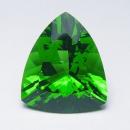|
Click on a letter above to view the list of gems. |
|
|
|
|
|
|
|
|
Tanzanian
Tektite |
|
| Chemistry: SiO2 (75% Silica + Al, Ca, Fe, K, Mg, Mn, Na, Ti) | |
| Discovery:
unknown;
IMA
status: Not Valid | ||
|
| ||
|
Classification |
|
|
| |
|
Mineraloids | |
|
n/a | |
|
n/a |
|
|
|
|
|
Crystal Data |
|
|
|
|
|
Amorphous (natural glass) |
|
|
n/a |
|
|
|
|
|
Physical Properties |
|
|
|
|
|
None |
|
|
Conchoidal, Sub-conchoidal |
|
|
Brittle |
|
|
5.5 - 6.5 |
|
|
2.33 - 3.00 (g/cm3) |
|
|
Not Radioactive |
|
|
|
|
|
Optical Properties |
|
|
|
|
|
Dark Brown, Black |
|
|
Translucent to Opaque |
|
|
Vitreous |
|
|
1.46 - 1.54 Isotropic |
|
|
0.00 (Isotropic) |
|
|
n/a |
|
|
n/a |
|
|
|
|
|
Occurances |
|
|
|
|
|
Geological Setting: |
Meteor impact zones |
|
Type Locality: |
The former French colonies of Indochina (Vietnam, Laos, Cambodia) but also found in Thailand and southern China |
|
Year Discovered: |
n/a |
|
View mineral photos: | |
|
|
|
|
More Information |
|
|
|
|
|
|
Mindat.org
(Indochinite) |
|
|
|
|
Tanzanian
Tektites may be similar to other Tektites such as Indochinites,
Libyan Desert Glass
and Moldavite.
Tektites
may be Meteoric Silica Glass as a result of the impact
of a meteor on Earth. Tektites are usually found in
association with meteor impact craters or suspected
ancient craters. Their origin is not fully understood.
The leading theory, the "Meteorite Impact
Theory", is that when a meteorite hits the Earth,
the heat and pressure of the impact are so great that
it causes rock and sand to be fused into glass
or Tektites. |
|
|
We
have not photographed our Tanzanian Tektite gems yet. Please
check back soon! |
